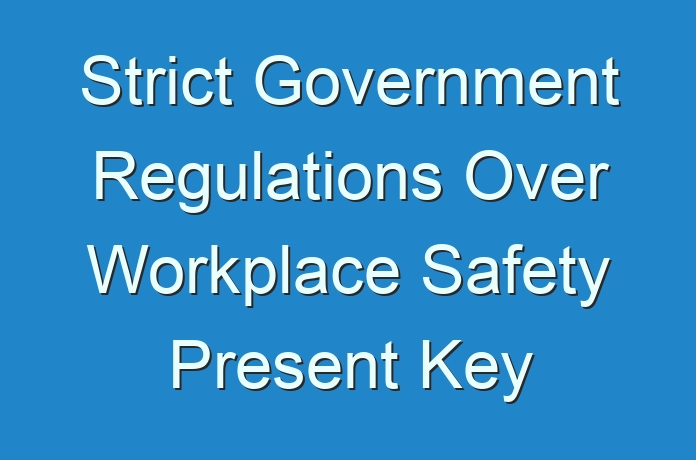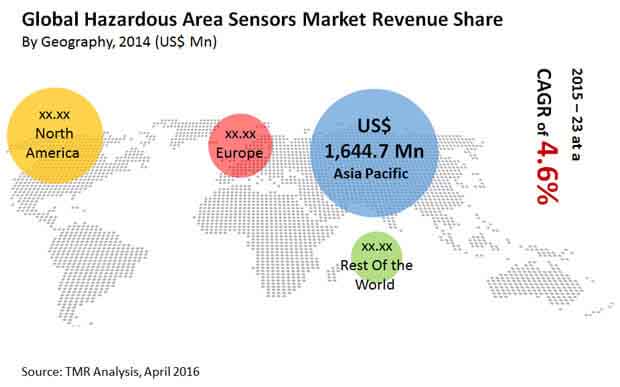
The global hazardous area sensors market is characterized by the presence of a few large and experienced players such as Honeywell International Inc., ABB Group, and Siemens AG, which presents a huge barrier to new entrants. These established players already have a stronghold on the global market, with stiff competition between them. Transparency Market Research identifies security threats as the major challenge for all existing players and finds that companies have been devising improved products with better security features.
“Product innovation and development is a key strategy adopted by most leading market players,” the lead author of the study finds. “In order to survive stiff competition in the hazardous area sensors market, companies are involved in research and development activities to create innovative products.”
Want to know the obstructions to your company’s growth in future? Request a brochure @ https://www.transparencymarketresearch.com/sample/sample.php?flag=S&rep_id=13079
Honeywell International, for instance, expanded its portfolio of hammer union/wing union pressure sensors in April 2016 with the addition of the IEC Ex/ATEX certified Model 343 to its already existing 435 and 437 models.

Concept of “Intrinsic Safety” Gains Prominence
The rising importance of intrinsic safety has positively influenced the growth of the hazardous area sensors market, TMR states. Intrinsic safety is a globally recognized and widely accepted technique of low-energy signaling at a hazardous location, thereby preventing the occurrence of explosions. The acceptance of this concept in present-day manufacturing facilities in oil refineries, textile mills, paint manufacturers, and chemical plants has strongly driven the market and the impact is anticipated to be high toward the end of the forecast period.
“In addition to the growing prominence of intrinsic safety, the implementation of stringent government legislations across the globe has compelled companies to make use of hazardous area sensors,” the author of the study observes. Countries such as the U.S., the U.K., Germany, Canada, France, Austria, Switzerland, and the Netherlands have set up specific standards, certifications, and ratings for sensor safety.
On the flip side, economic slowdown in several countries and the high cost of upgrading legacy systems while installing modern sensors are likely to hamper the growth of the global hazardous sensors market.
Purchase Premium Research Report @ https://www.transparencymarketresearch.com/checkout.php?rep_id=13079<ype=S
Surging Application of Hazardous Area Sensors in Shale Gas Exploration and Extraction
The global market for hazardous area sensors is anticipated to register an increase in value from US$4.5 bn in 2014 to US$6.7 bn by 2024 at a 4.6% CAGR therein. By application, the oil and gas industry has led the overall hazardous area sensors market with a share of almost 22% in 2014. “Fueled by the growing application of these sensors in the exploration and extraction of shale gas, this segment is likely to retain its lead through 2024,” the analyst predicts.
By type of sensors, gas sensing was the key revenue generator in 2014, driven by the rising application of gas sensing hazardous area sensors in various industry verticals. Geographically, Asia Pacific has been the leading contributor in terms of revenue and is projected to remain so throughout the forecast period. “This can be attributed to the rising awareness levels on intrinsic safety and rapid economic and industrial growth,” the TMR analyst states.
This review is based on the findings of a TMR report titled “Hazardous Area Sensors Market: Global Industry Analysis, Size, Share, Growth, Trends, and Forecast 2015 – 2024.”
Read Our Trending Press Release Below: https://www.prnewswire.com/news-releases/growing-concern-about-babys-health-and-protection-is-expected-to-spur-demand-in-the-global-baby-diapers-market-rise-in-the-number-of-working-women-to-further-widen-scope-of-the-market—tmr-301318489.html





